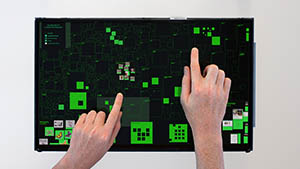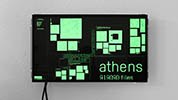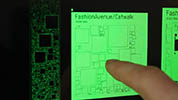


|
|

|

|
Description
The Deleted City is a digital archaeology of the world wide web as it exploded into the 21st century. At that time the web was often described as an enormous digital library that you could visit or contribute to by building a homepage. The early citizens of the net (or netizens) took their netizenship seriously, and built home-pages about themselves and subjects they were experts in. These pioneers found their brave new world at Geocities, a free web-hosting provider that was modelled after a city and where you could get a free "piece of land" to build your digital home in a certain neighbourhood based on the subject of your homepage. Heartland was—as a neighbourhood for all things rural—by far the largest, but there were neighbourhoods for fashion, arts and far east related topics to name just a few.
Around the turn of the century, Geocities had tens of millions of "homesteaders" as the digital tenants were called and was bought by Yahoo! for three and a half billion dollars. Ten years later in 2009, as other metaphors of the internet (such as the social network) had taken over, and the homesteaders had left their properties vacant after migrating to Facebook, Geocities was shutdown and deleted. In an heroic effort to preserve 10 years of collaborative work by 35 million people, the Archive Team made a backup of the site just before it shut down. The resulting 650 Gigabyte bit-torrent file is the digital Pompeii that is the subject of an interactive excavation that allows you to wander through an episode of recent online history.
Perspective
Contrary to popular belief, the internet does forget. Geocities was one of the first massive online communities and subsequently one of the first to perish. With the deletion of 35 million home-pages not only did we lose the texts and images they contained, but also the structure, concepts and spirit of the community that created them.
With the shift in metaphors used to describe and understand the internet from the more utopian "digital city" or "global library" used in the 1990's to the more utilitarian "social network" or "cloud" that are popular today, the homepage gave way to the profile, netizens became users and many of their aesthetic and linguistic experiments were standardised into templates.
The Deleted City aims to revisit the Internet-as-a-city to evaluate how the medium, the values that underpin it and the metaphors that describe it have changed. Looking at these html files (many of them hand-coded) through a contemporary touch screen, you see the early netizens struggling with the medium, trying to find a common language and define the ever under construction homepage as we knew it.
Technical
The installation is an interactive visualisation of the 650 gigabyte Geocities backup made by the Archive Team on October 27, 2009. It depicts the file system as a city map, spatially arranging the different neighbourhoods and individual lots based on the number of files they contain.
In full view, the map is a data visualisation showing the relative sizes of the different neighbourhoods. While zooming in, more and more detail becomes visible, eventually showing individual html pages and the images they contain. While browsing, nearby MIDI files are played.
Richard Vijgen (1982) is a information designer / artist living in the Netherlands. His Studio for Object Oriented Information design & Research initiates projects that visually explore the cultural implications of 'big data' and 'unstable media'. Check out RichardVijgen.nl and DeletedCity.net.



 del.icio.us
del.icio.us


